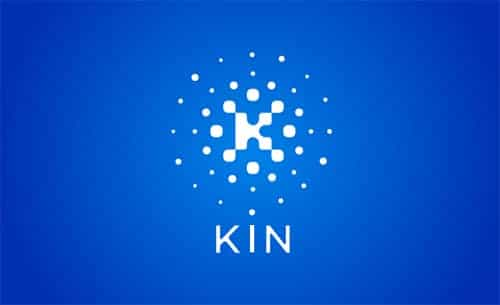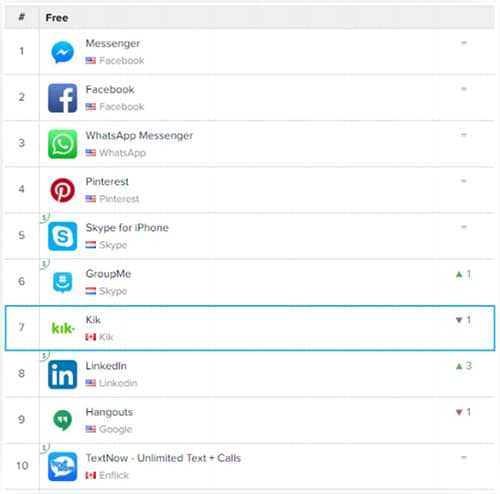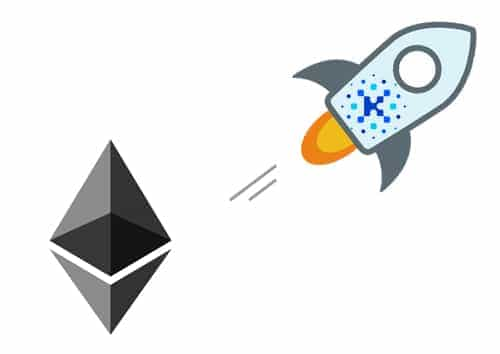Kin Coin Review: Utility Token Driving The Kik Ecosystem
There are now well over 1,000 cryptocurrencies representing financial services, logistics, music and so much more.
Many of these coins will eventually die out as their projects are never brought to full potential, or they find they were never really suited for blockchain technology.
Another area that’s seen blockchain adoption is social media, and one of the top ICO coins in that space has been the KIN Coin, which was developed to support the app and company known as Kik.
What is the KIN Coin?

The KIN coin was created last year by social media company Kik. Rather than going after another round of venture capital, the company decided to take to the blockchain, and they then executed an ICO that netted them $98 million in just seconds.
It was one of the largest and fastest ICOs and it put Kik on the map as a leader in decentralized and anonymous social media. The KIN coin spiked higher in December 2017 and January 2018 along with the rest of the cryptocurrency markets, but has since retreated, although it remains above its ICO level.
KIN was created as a means for creators to connect directly with consumers, thus removing the need for advertising as a way to monetize content. KIN has seen continued development since its ICO and several major shifts in strategy.
It was created as an ERC-20 token, but the developers had planned on moving to Stellar for scalability. Just recently they announced that instead they would be developing their own scalability solution.
Below you’ll learn about the background of the KIN coin and more information about the Kik messaging app. I’ll also touch on the development roadmap, as well as trading and storing the KIN coin.
The Kik Social Media Platform
If you want to understand why KIN was launched and what it hopes to achieve, you first need to look at Kik, the company behind the launch. We’ll soon see that the motivation for launching the coin was likely partially a marketing ploy, but was also financial and philosophical in nature.

In case you haven’t heard of it, Kik is a social media platform and messenger app with more than 300 million registered users. Of course that’s somewhat misleading as the company itself admits there are only 15 million active users. Most of these are between the age of 13-24 and a good portion are U.S. teens.
The primary function of Kik is to send messages to your friends, but it also allows for sharing images, videos, webpages, audio files and other types of media. Major brands are active on Kik, and there are tens of thousands of bots that perform tasks such as ordering pizza, telling jokes, or sharing the latests sports and celebrity news.
The key selling point for Kik users is its anonymity. Unlike many social media services there’s no need to verify a phone number or other personally identifying information to sign up. All that’s required is an email address and first name. It’s refreshing in an era where social media services are often most motivated by collecting and monetizing user data.
Instead, Kik has taken another course and refuses to collect and sell user data. None of the account information is retained, and even messages or other media shared between Kik users is deleted from the company servers immediately after being sent.
There have also been security concerns leveled at Kik over the lack of identity verification. Because Kik is primarily used by teens some critics have questioned protections from unwanted content, fraud, abuse, and predators. Kik has responded by saying its users know how to use the platform safely, and has refused to give up user privacy and anonymity in exchange for greater security. It of course brings to mind that famous Benjamin Franklin quote:
Those who would give up essential Liberty, to purchase a little temporary Safety, deserve neither Liberty nor Safety
Rewarding Creators Directly
Kik has moved to allow their users to reward content creators directly as an alternative to using advertising, which is the model used by nearly every social media platform. This advertising model requires social media companies to increase their user base as rapidly as possible, and to grow their user base as large as possible. It also forces them to take steps that keep users on the site as long as possible, since this maximizes ad views and revenues.

The leaders at Kik don’t think this evolution towards an attention economy is right. So, their philosophical reason for creating the KIN token is to combat the trend towards advertising and attention seeking. They believe this model only serves to cheapen content and content creators. By creating the KIN coin they hope to see users reward content creators directly, which is more of a crowdsourced patronage model, such as we’ve seen at Kickstarter and Patreon.
Kik and the KIN coin take this one step further by integrating the payment method directly into the platform. This will allow Kik users to reward their favorite content and content creators from within the platform as easily as clicking a button. In this way Kik is becoming similar to the Steem social media platform, but Kik already has a much larger and engaged user base, as well as a large amount of multimedia content.
Kik even tested the concept of whether their users would use coins for transactions before launching the KIN coin. Beginning in 2014 they ran a 2-year long test with Kik points, which were internal tokens not backed by a blockchain. Even so, they found over 300,000 Kik point transactions per day taking place right from the start. By the end of the two year test period there were 2 million Kik point transactions happening per day.
The KIN Coin ICO
In 2017 Kik found it needed additional funding, but rather than going for another round of venture capital funding they decided to launch a cryptocurrency to create an actual token to back their points based system.
The ICO was a huge success, raising $98 million dollars even though Canadian residents were barred from participating. Some feel this was the reason the KIN ICO failed to reach its hard cap of $110 million. Since Kik is a Canadian company it makes sense that Canadians would have been enthusiastic investors. Still, there were over 10,000 people from 117 countries who participated in the ICO.
Eventually, there will be a total of 10 trillion KIN, and currently there are 750 billion in circulation.
KIN Launching on Kik
The KIN Foundation is separate from Kik and it is working on launching the coin on Kik by the third quarter of 2018. As of June 27, 2018 the coin is in a beta test that includes just 1,000 users. The intent is for the monetization to be fully and seamlessly integrated at launch. It should be possible for users to reward their favorite creators with just a few taps. Initially KIN coin will be mobile only, with a desktop wallet app planned for late 2018/early 2019.
The KIN coin has been tested for several months on Kik already by a small number of users. Usage so far has been to buy digital stickers for use in the chats, but more features are being planned for launch. Eventually the KIN developers expect to offer the coin for use on other platforms outside Kik, but Kik will be the first to get KIN integration.
Move from Ethereum to Stellar

The initial tests on Kik used the Ethereum blockchain, but the developers quickly found that they would be hampered by Ethereum’s lack of scalability. With Ethereum limiting KIN to 10,000 transactions per day it was soon clear that another solution would be needed.
By May 2018 the development team had the project moved to Stellar and was testing the scalability of that platform on a testnet. But, because Stellar had liquidity issues they needed to create a hybrid solution.
In this case the Ethereum blockchain will provide liquidity for KIN, and the transactions will be handled by a custom coded solution. The IN developers soon found that even Stellar would not scale to meet their needs, but with the knowledge gained from working with Ethereum and Stellar they have been able to code their own custom solution that is already capable of handling 1.2 million daily transactions.
The KIN Foundation
As mentioned above, the KIN foundation is a separate entity from Kik. It was setup as a non-profit advocacy group for the development of digital communication. So, eventually the foundation plans to use KIN as a currency for an entire ecosystem of communication tools, not just Kik.
There’s very little information regarding the KIN Foundation on their website. We have no idea who’s behind the foundation or how governance works. And while legally the KIN foundation is separate from Kik, we’ll have to wait and see if it actually operates independently from Kik, or if it simply promotes Kik’s broader ambitions.
Purchasing and Trading KIN
As soon as KIN is integrated into Kik later in 2018 you’ll be able to earn your own KIN by creating content or doing other tasks on Kik. Until then you can purchase KIN on the Bancor Network, HitBTC, FatBTC, IDEX and several other smaller exchanges. In most cases you’ll need ETH to purchase KIN.
The price of KIN decreased immediately following its ICO as the hype died off, but it then soared to new heights during the December/January rally in crypto markets. Since then price has declined, but it remains above ICO levels, and has been one of the more resilient coins.
If you do purchase KIN at this time you can store it in the exchange wallet, but to be more secure you should move it to your own wallet. It is an ERC-20 token and can be stored in any ERC-20 compatible wallet, such as MyEtherWallet or MetaMask.
Conclusion
KIN will launch with a huge active user group already in place, which is a big positive for the coin in terms of usage. Seeing how the token performs will be interesting as there are several social media blockchain startups, but very few that have large user bases, or even a working product at this time.
If KIN and Kik have figured out how to provide a great user experience on a social media platform using cryptocurrencies they will have taken an important step forward.
While some of the motivation in creating this token was certainly financial, it does seek to work with the gamification aspect that comes with social media. KIN could certainly be on to something, but will likely need to spread beyond Kik to become extremely successful.
Disclaimer: These are the writer’s opinions and should not be considered investment advice. Readers should do their own research.
